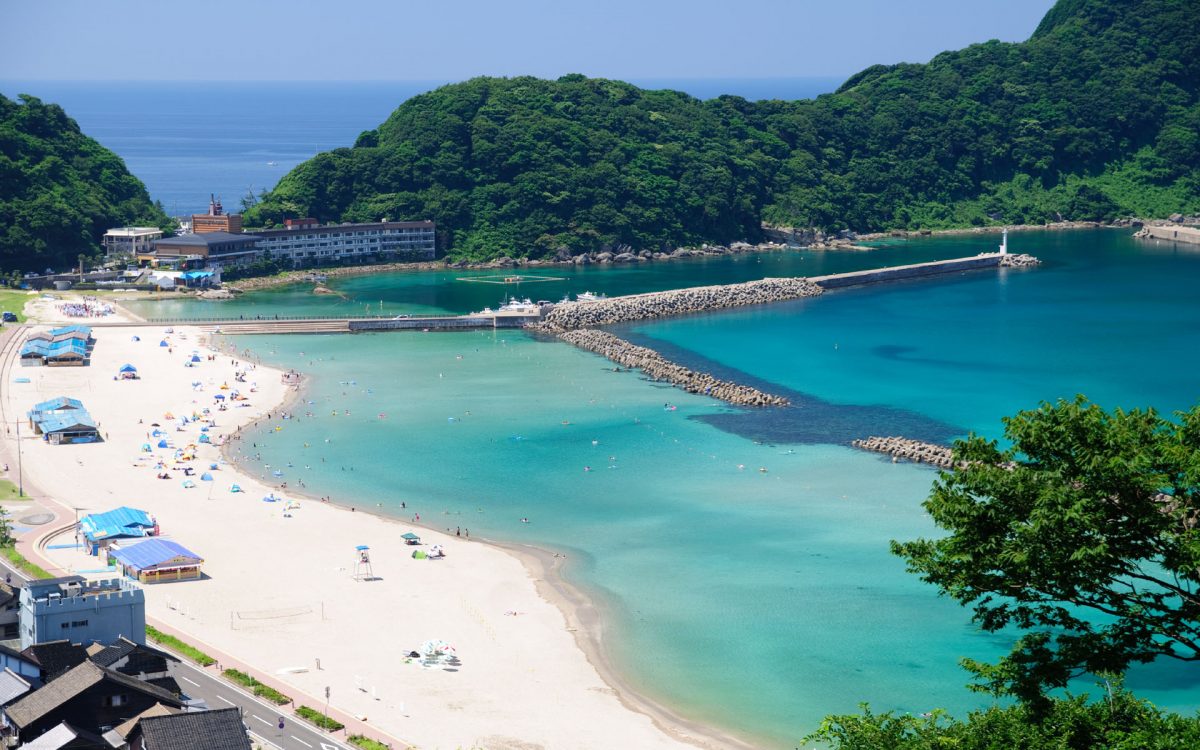Did you know that Japan has more coastline than most other countries on Earth? This is because Japan is made up of thousands of islands.
More coastline means more beaches — ideal for summer travelers looking to soak up the sun.
Whether you’re staying on the four largest islands — Honshu, Hokkaido, Shikoku, and Kyushu — or one of the 260 inhabited small islands that belong to Japan, you’re never far from a great beach.
Here are our favorite Japanese beach locations, as well as some useful information and tips for getting to and from the beach using your Japan Rail Pass.
Table of Contents
Naoshima Island
The Seto Inland Sea is home to some of Japan’s best beaches. The region’s mild climate makes for pleasant beach weather in spring and fall, while summer temperatures can be a balmy 32°C.
In the middle of this sea — south of Okayama and north of Shikoku — lies Naoshima Island.
Aside from having stunning beaches, one of the big draws of Naoshima is the art. There are numerous contemporary art installations and museums. You can enjoy several of these art installations right on the beach itself.
There’s another unique experience to be found here. You can spend the night on the beach in a yurt — a circular tent traditionally used by herdsmen in Mongolia.
How to get there: From Tokyo, take the JR Tokaido/Sanyo Shinkansen to Okayama. Then take the JR Uno Line to Uno Station. Walk across the street to the ferry terminal, and you will reach the island by ferry.
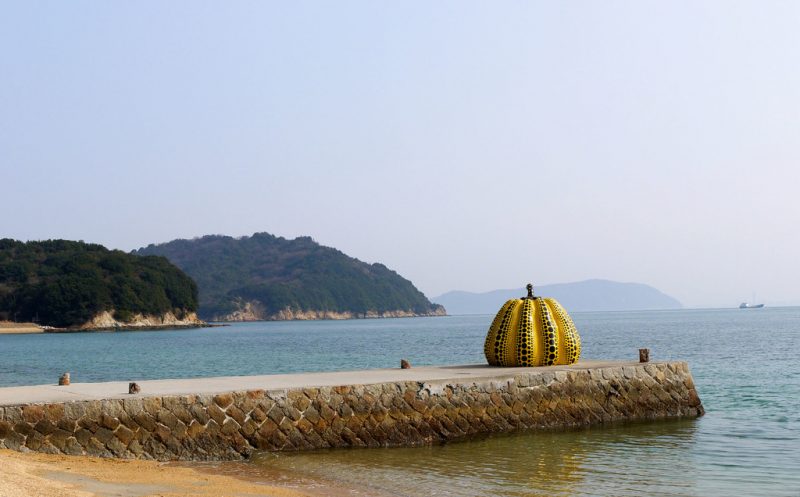
Katsurahama Beach (Kochi prefecture)
Katsurahama Beach is also a scenic destination, near the city of Kochi, on the island of Shikoku.
Although swimming is prohibited, there are some popular attractions, including the famous Sakamoto Ryoma statue and the Tosa Dog Museum.
How to get there: A one-way trip (Kochiken Kotsu local bus) from JR Kochi Station to Katsurahama Beach costs 690 yen and takes 35 minutes.
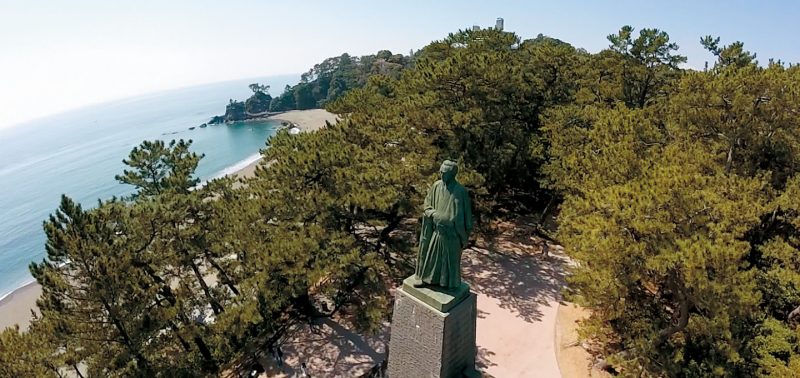
Yakushima Island (Kyushu)
The inspiration for the anime classic Princess Mononoke by Studio Ghibli, Yakushima Island off the coast of Kyushu is home to some of the oldest rainforest trees in the world.
Between the months of April and September, loggerhead sea turtles also inhabit the island to lay their eggs.
How to get there: From Tokyo, take the Tokaido Shinkansen to Kagoshima. The trip will last approximately 8 hours and requires several train transfers, but is completely covered by the JR Pass. From Kagoshima, you can take a boat or ferry to the island.
Beaches in Okinawa
The islands of Okinawa are much further south than the rest of Japan. You can expect warm weather and beaches open here all year round. Even in winter, it rarely gets below 15°C (59°F)!
You’re spoiled for choice when it comes to beaches.
Whether you just want to relax in the sun or dive into the water and see the corals, reef fish, or sea turtles that make their homes here, Okinawa ticks all the boxes.
Some of the best spots can be found on:
Ishigaki Island
The Kerama Islands
Kume Island — including a 7 km sandbar called Hatenohama Beach
Miyako Island
Okinawa Island
If you’re planning on swimming or water sports, the best time to visit Okinawa is between the months of May and October, when the weather is warmest.
Stay safe: Always be aware of strong currents. From June to October, stay informed as to reports of the poisonous habu box jellyfish in the area.
How to get there: As Okinawa is an island and not part of the mainland, it must be reached by air. Flights leave daily from Narita Airport (Tokyo), with a flight duration of 2.5 hours.
When on the island, you can purchase a 1-day or 2-day pass for the Okinawa Monorail, or take advantage of its dense bus network.
Numerous ferries and even a helicopter service connect the various islands.
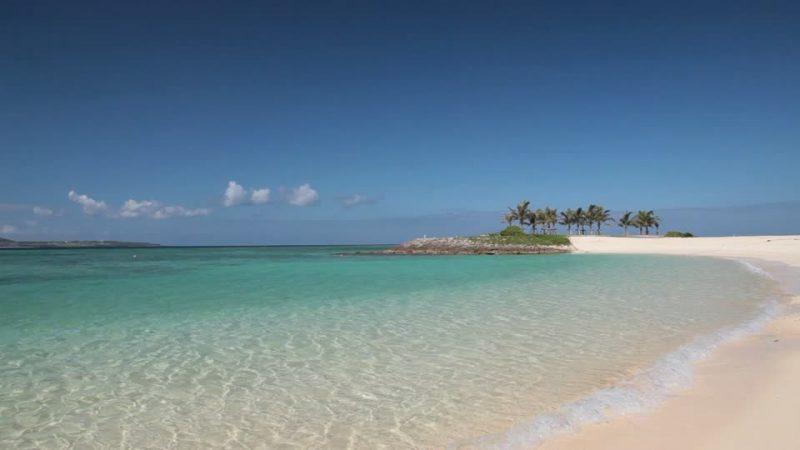
Beaches near Tokyo
Tokyo is one of the hottest destinations in Japan. This fast-paced “neon city” is home to traditional gardens, soaring skyscrapers, and enormous, unique shopping experiences.
If you’d like a little downtime at the beach on your next visit to Tokyo, you are in luck, as beautiful beaches are located not far from the city, making for a great day trip.
The warmest months around Tokyo are mid-July through August, but temperatures are often warm enough for swimming June through September.
Odaiba Beach
Odaiba is a man-made beach, 800 meters in length, located near the Decks shopping mall. While swimming is not permitted, visitors enjoy sunbathing, spectacular sunsets, and beach volleyball.
How to get there: From Shimbashi Station on the Yamanote Line, take the Yurikamome train across Rainbow Bridge. While this train is not covered by the JR Pass, the views of the city are well worth the trip.
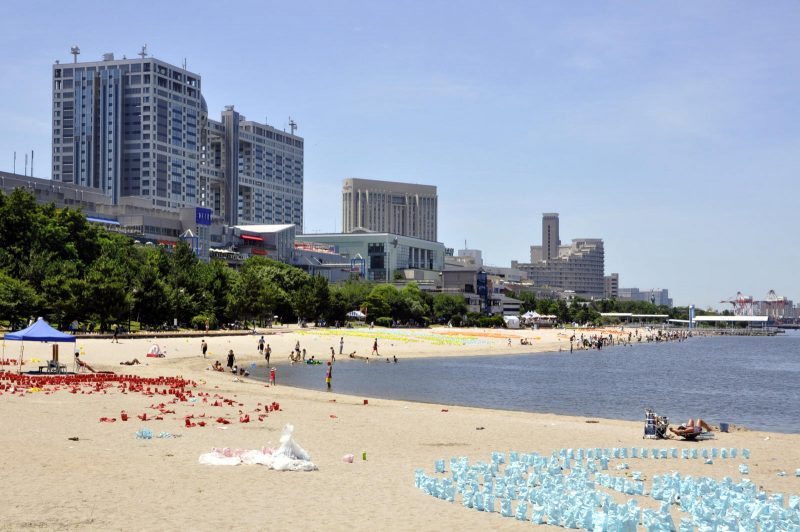
Shirahama Beach (Shizuoka)
Among Japanese surf destinations, Shirahama Beach is not to be missed. The torii gate of the Shirahama Jinja Shinto shrine is visible from the beach.
How to get there: From Tokyo, take the JR Limited Express Odoriko. A supplemental fee may be required. From Izukyu-Shimoda Station, take a 10-minute bus ride to Shirahama Kaigan.
Etiquette on Japan’s beaches
Japanese beach etiquette is fairly similar to in other parts of the world. However, be aware that some beaches may have their own rules, such as covering tattoos or banning outside alcohol.
Here are some general guidelines on how to behave on the beach in Japan.
- Take your trash with you when you leave
- Check if tattoos are permitted — some beaches require ink to be covered, as is the case in most onsen.
- Do not swim if you see signs reading 危険 (“danger”) or 遊泳禁止 (“swimming prohibited”)
- Be careful not to disturb other beachgoers if playing ball or frisbee games
It’s also worth knowing that in Japan, you can drink in public, and it’s perfectly fine to bring alcohol and drink on the beach (unless expressly forbidden on a particular beach).
However, it is advisable to moderate your drinking in intense heat or if you’re going swimming in the sea.
As a general rule of etiquette, be considerate of those around you on the beach.
Travel tips
To make the most of your day at the beach in Japan, don’t forget the following:
- Sunscreen — it can get very hot, particularly in southern parts of Japan, such as Okinawa
- Parasols and tents — it’s fairly normal to see beachgoers bring some shade with them, and it’s a good idea for sun protection. You can often rent parasols and sunloungers if you don’t have your own.
- Drinks — stay hydrated! You can also take advantage of Japan’s laws to bring alcoholic beverages to enjoy at the beach.
- Towels — this may seem obvious, but it’s a really good idea to dry off and get rid of that sand, especially if you’re going to take public transport.
At most of the beaches mentioned above, basic facilities such as changing rooms, showers, and toilets are provided, so you don’t have to worry about taking sand with you when you leave.
Some of the popular beaches also have facilities for equipment rental and refreshments.
Safety at Japanese beaches
Most beaches have lifeguards on staff during beach season.
During the off season, there are no lifeguards or safety measures, such as nets to keep out sharks and jellyfish.
If you’re planning to take advantage of these quiet months to take a dip in the sea, be careful.
Whether a lifeguard is present or not, you should check the rules and potential hazards of the beach you plan to go to. These could include strong currents or the presence of jellyfish.
With this information in mind, your Japanese beach vacation is sure to be both enjoyable and memorable!
Cover picture: Takeno Beach (Hyogo Prefecture)
